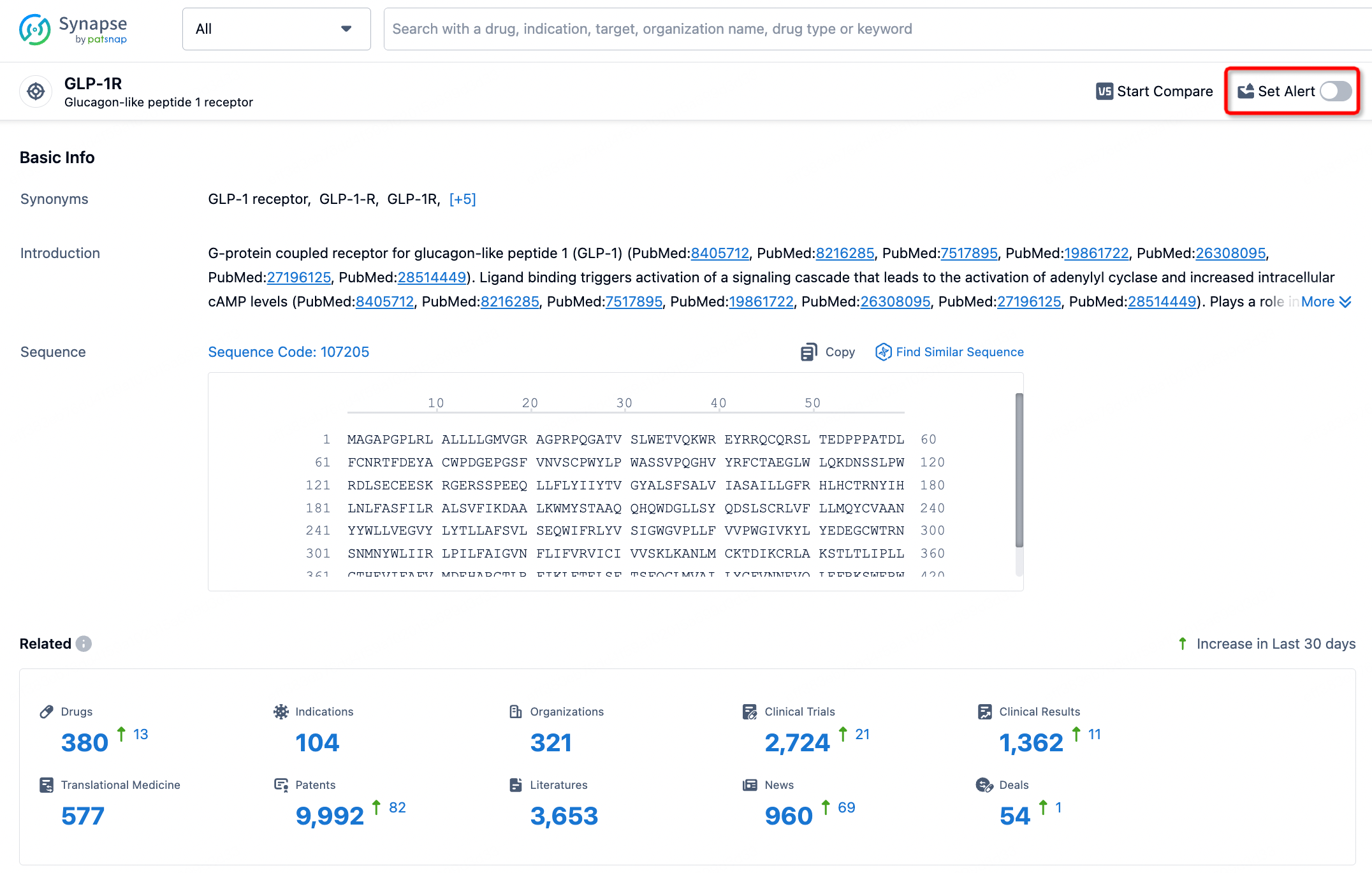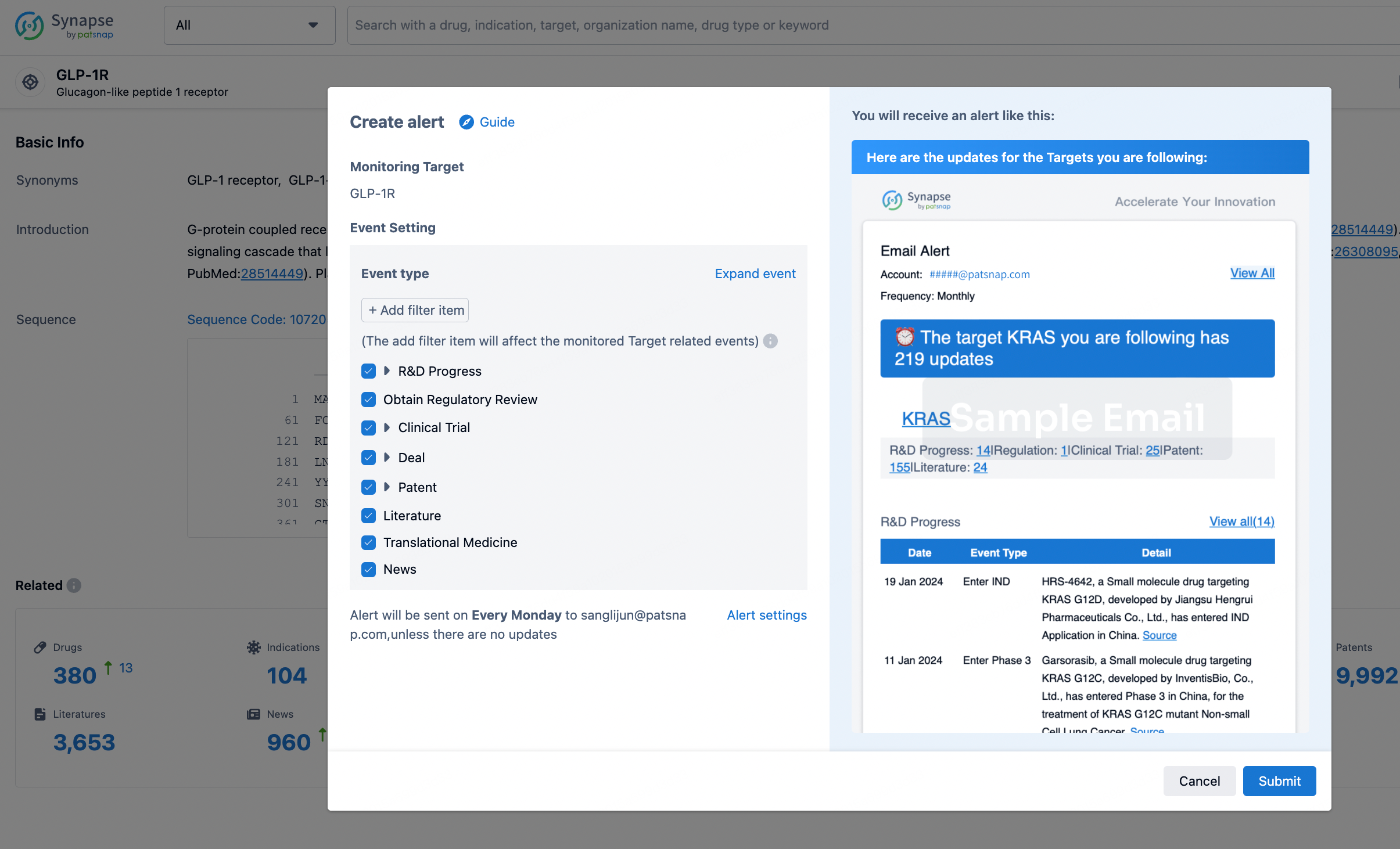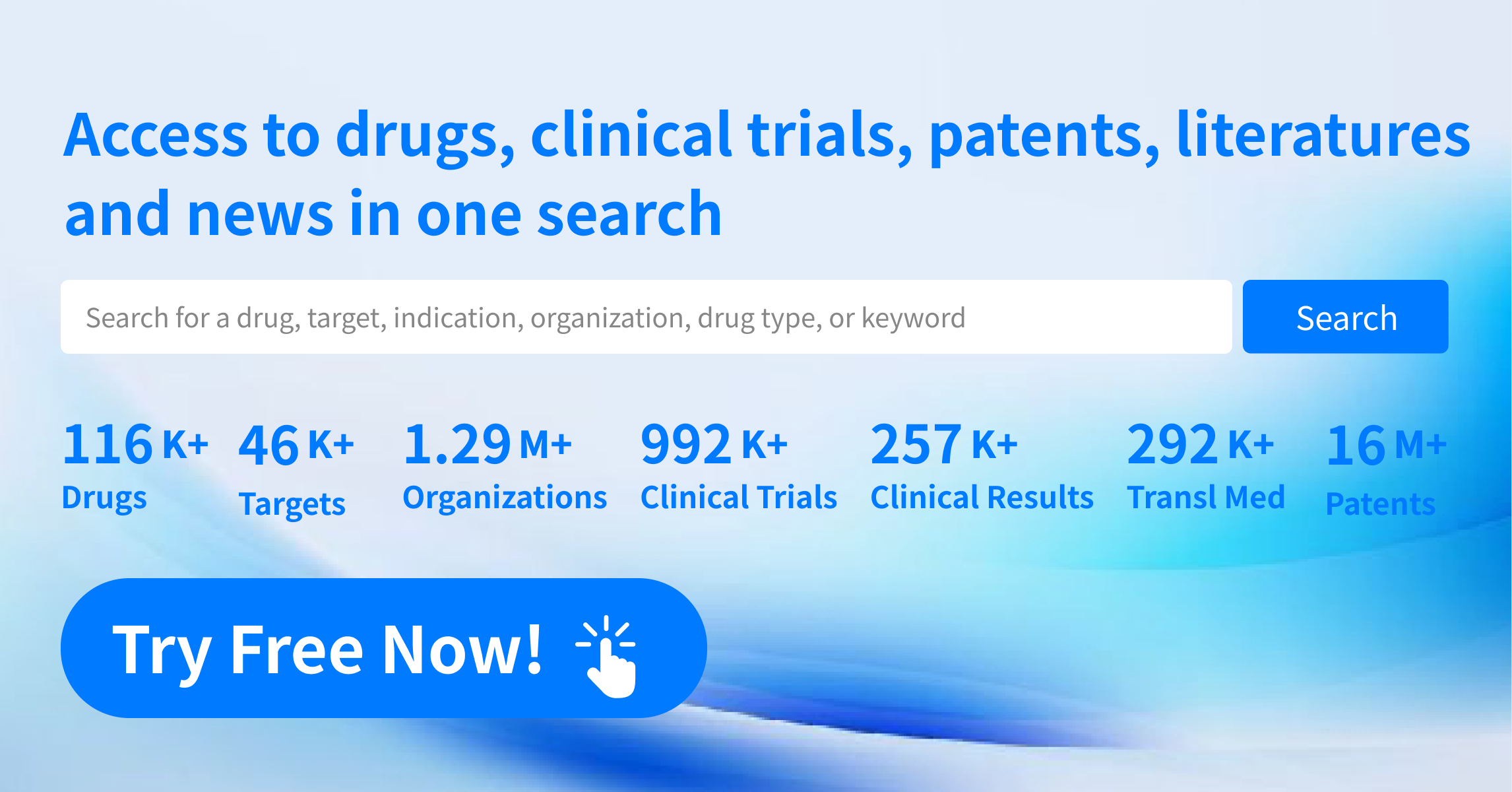Request Demo
What are CDS1 inhibitors and how do they work?
25 June 2024
CDS1 inhibitors are an emerging class of pharmacological agents that have garnered significant interest in the field of biomedical research. CDS1, or CDP-Diacylglycerol Synthase 1, is an enzyme involved in lipid metabolism and membrane synthesis. By inhibiting CDS1, researchers aim to modulate specific pathways that could lead to therapeutic benefits in various diseases. This article delves into the intricacies of CDS1 inhibitors, exploring how they work and their potential applications in the medical field.
CDP-Diacylglycerol Synthase 1 (CDS1) plays a crucial role in the biosynthesis of phosphatidylinositol, a phospholipid integral to cell membrane structure and function. As an enzyme, CDS1 catalyzes the conversion of phosphatidic acid to CDP-diacylglycerol, a key step in the production of phosphatidylinositol. By inhibiting this enzyme, CDS1 inhibitors can disrupt the phosphatidylinositol signaling pathway, a pathway implicated in a variety of cellular processes including cell growth, proliferation, and metabolism. This disruption offers a unique avenue for therapeutic intervention, particularly in conditions where these cellular processes are dysregulated.
The mechanism of action of CDS1 inhibitors revolves around their capacity to bind to the active site of the CDS1 enzyme, thereby preventing it from catalyzing its natural substrate, phosphatidic acid. By blocking this conversion, the cellular levels of CDP-diacylglycerol and subsequent phosphatidylinositol decrease. This reduction can have downstream effects on various signaling and metabolic pathways that rely on phosphatidylinositol and its derivatives, such as phosphatidylinositol 4,5-bisphosphate (PIP2) and phosphatidylinositol 3,4,5-trisphosphate (PIP3). These molecules are pivotal in the regulation of numerous cellular functions, including those mediated by the PI3K/Akt pathway, a critical axis involved in cell survival and proliferation.
The development of CDS1 inhibitors is still in its nascent stages, but the potential therapeutic uses are promising. One of the primary areas of interest is cancer treatment. Tumor cells often exhibit elevated levels of phosphatidylinositol signaling, which supports their unchecked growth and survival. By inhibiting CDS1, researchers hope to curb these oncogenic signals, thereby suppressing tumor growth and potentially enhancing the efficacy of existing cancer therapies. Preclinical studies have shown that CDS1 inhibitors can reduce tumor cell viability and sensitize cells to chemotherapy, underscoring their potential as adjuvant agents in cancer treatment.
Beyond oncology, CDS1 inhibitors are also being explored for their role in metabolic disorders. Given that phosphatidylinositol is a key player in insulin signaling, modulating its levels via CDS1 inhibition could offer new strategies for managing conditions like type 2 diabetes and obesity. Animal models have demonstrated that altering phosphatidylinositol metabolism can improve insulin sensitivity and reduce adiposity, suggesting that CDS1 inhibitors might one day be part of a therapeutic regimen for metabolic diseases.
In addition to cancer and metabolic disorders, another intriguing application of CDS1 inhibitors lies in neurodegenerative diseases. The PI3K/Akt pathway is also involved in neuronal survival and function. Dysregulation of this pathway has been implicated in diseases like Alzheimer’s and Parkinson’s. Preliminary research indicates that CDS1 inhibitors could potentially modulate neuronal signaling pathways, offering neuroprotective effects and slowing disease progression.
Moreover, CDS1 inhibitors may also have a role in cardiovascular diseases. Phosphatidylinositol signaling is important for the maintenance of endothelial function and vascular health. By targeting CDS1, it might be possible to develop new treatments for conditions like atherosclerosis and hypertension, where endothelial dysfunction is a key pathological component.
In conclusion, CDS1 inhibitors are a promising new frontier in pharmacology, with potential applications in cancer, metabolic disorders, neurodegenerative diseases, and cardiovascular health. While research is still in the early stages, the ability to modulate critical signaling pathways through CDS1 inhibition offers exciting prospects for the development of novel therapies. As our understanding of the biological roles of phosphatidylinositol and its derivatives deepens, so too will the potential for CDS1 inhibitors to become valuable tools in the fight against a range of diseases.
CDP-Diacylglycerol Synthase 1 (CDS1) plays a crucial role in the biosynthesis of phosphatidylinositol, a phospholipid integral to cell membrane structure and function. As an enzyme, CDS1 catalyzes the conversion of phosphatidic acid to CDP-diacylglycerol, a key step in the production of phosphatidylinositol. By inhibiting this enzyme, CDS1 inhibitors can disrupt the phosphatidylinositol signaling pathway, a pathway implicated in a variety of cellular processes including cell growth, proliferation, and metabolism. This disruption offers a unique avenue for therapeutic intervention, particularly in conditions where these cellular processes are dysregulated.
The mechanism of action of CDS1 inhibitors revolves around their capacity to bind to the active site of the CDS1 enzyme, thereby preventing it from catalyzing its natural substrate, phosphatidic acid. By blocking this conversion, the cellular levels of CDP-diacylglycerol and subsequent phosphatidylinositol decrease. This reduction can have downstream effects on various signaling and metabolic pathways that rely on phosphatidylinositol and its derivatives, such as phosphatidylinositol 4,5-bisphosphate (PIP2) and phosphatidylinositol 3,4,5-trisphosphate (PIP3). These molecules are pivotal in the regulation of numerous cellular functions, including those mediated by the PI3K/Akt pathway, a critical axis involved in cell survival and proliferation.
The development of CDS1 inhibitors is still in its nascent stages, but the potential therapeutic uses are promising. One of the primary areas of interest is cancer treatment. Tumor cells often exhibit elevated levels of phosphatidylinositol signaling, which supports their unchecked growth and survival. By inhibiting CDS1, researchers hope to curb these oncogenic signals, thereby suppressing tumor growth and potentially enhancing the efficacy of existing cancer therapies. Preclinical studies have shown that CDS1 inhibitors can reduce tumor cell viability and sensitize cells to chemotherapy, underscoring their potential as adjuvant agents in cancer treatment.
Beyond oncology, CDS1 inhibitors are also being explored for their role in metabolic disorders. Given that phosphatidylinositol is a key player in insulin signaling, modulating its levels via CDS1 inhibition could offer new strategies for managing conditions like type 2 diabetes and obesity. Animal models have demonstrated that altering phosphatidylinositol metabolism can improve insulin sensitivity and reduce adiposity, suggesting that CDS1 inhibitors might one day be part of a therapeutic regimen for metabolic diseases.
In addition to cancer and metabolic disorders, another intriguing application of CDS1 inhibitors lies in neurodegenerative diseases. The PI3K/Akt pathway is also involved in neuronal survival and function. Dysregulation of this pathway has been implicated in diseases like Alzheimer’s and Parkinson’s. Preliminary research indicates that CDS1 inhibitors could potentially modulate neuronal signaling pathways, offering neuroprotective effects and slowing disease progression.
Moreover, CDS1 inhibitors may also have a role in cardiovascular diseases. Phosphatidylinositol signaling is important for the maintenance of endothelial function and vascular health. By targeting CDS1, it might be possible to develop new treatments for conditions like atherosclerosis and hypertension, where endothelial dysfunction is a key pathological component.
In conclusion, CDS1 inhibitors are a promising new frontier in pharmacology, with potential applications in cancer, metabolic disorders, neurodegenerative diseases, and cardiovascular health. While research is still in the early stages, the ability to modulate critical signaling pathways through CDS1 inhibition offers exciting prospects for the development of novel therapies. As our understanding of the biological roles of phosphatidylinositol and its derivatives deepens, so too will the potential for CDS1 inhibitors to become valuable tools in the fight against a range of diseases.
How to obtain the latest development progress of all targets?
In the Synapse database, you can stay updated on the latest research and development advances of all targets. This service is accessible anytime and anywhere, with updates available daily or weekly. Use the "Set Alert" function to stay informed. Click on the image below to embark on a brand new journey of drug discovery!
AI Agents Built for Biopharma Breakthroughs
Accelerate discovery. Empower decisions. Transform outcomes.
Get started for free today!
Accelerate Strategic R&D decision making with Synapse, PatSnap’s AI-powered Connected Innovation Intelligence Platform Built for Life Sciences Professionals.
Start your data trial now!
Synapse data is also accessible to external entities via APIs or data packages. Empower better decisions with the latest in pharmaceutical intelligence.


